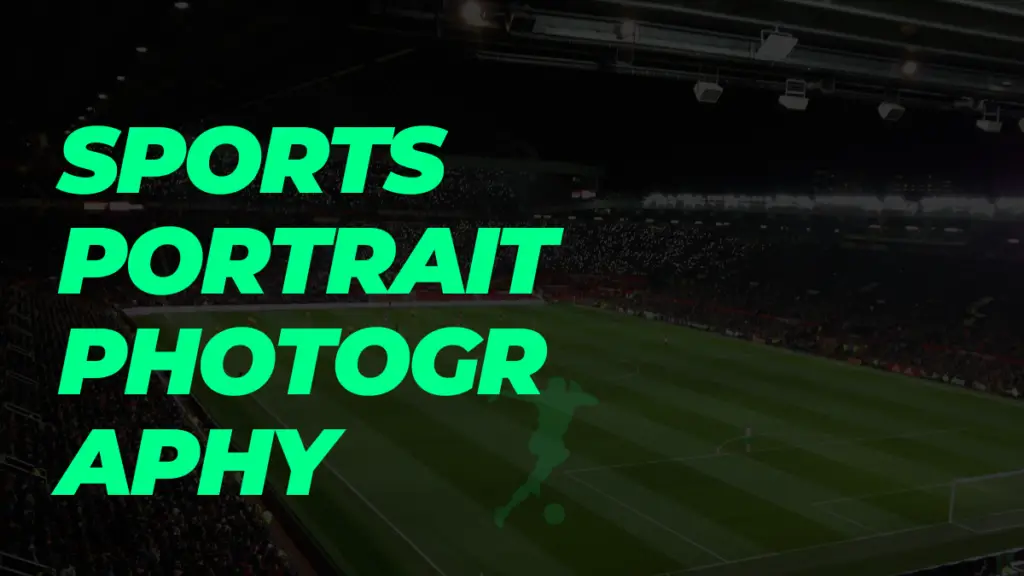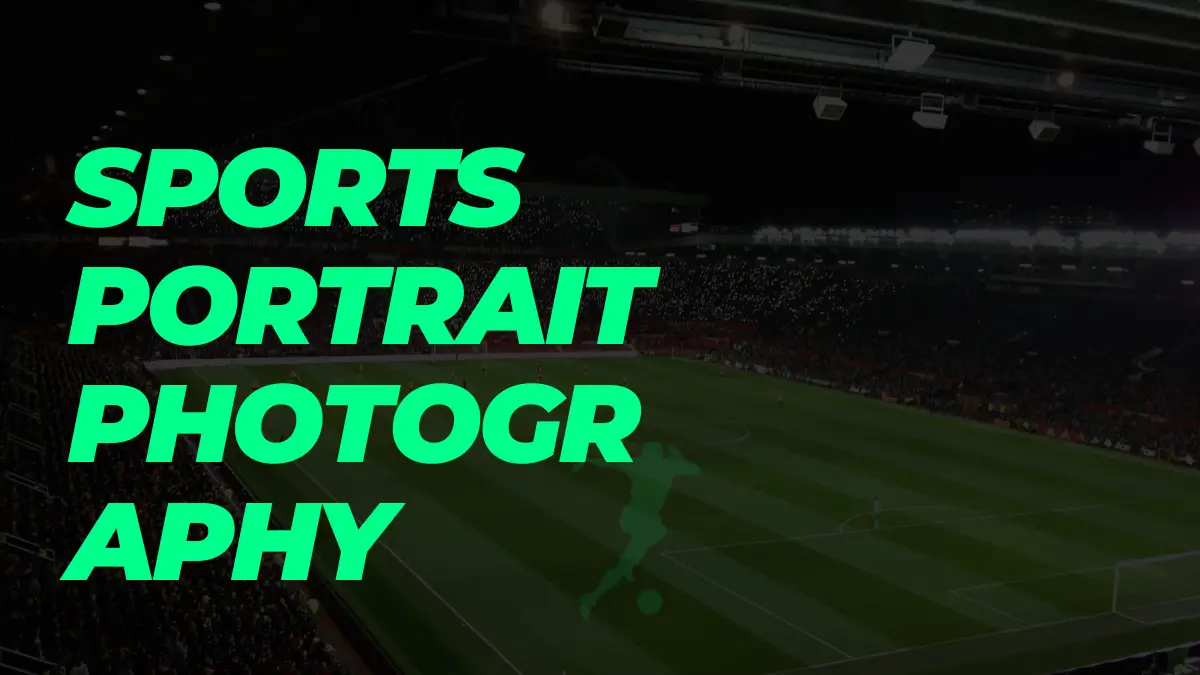As a photo taker, I have always been cateched Sports Portrait Photography by the power of capturing my camera through the lens of my camera. While portrait photography in itself is an art that requires some skills and expertise in creativity, sports portrait photography takes into a new level.
In this article, I will share my some of world sports portrait photography, Describing why it is different from other skills and sharing important tips and methods to help you capture the beauty of world in your sports portraits.
Why Sports Portrait Photography is Different
Sports portrait photography is unique because it combines the raw athleticism and passion of sports with the artistry of portraiture. Unlike traditional portrait photography, sports portrait photography requires the ability to catch a moment in time, catching the energy and emotion of an athlete in action. Whether it’s a basketball player mid-jump or a soccer player celebrating a goal, these enjoyfull moments are what make sports portrait photography so important.
More, sports portrait photography presents its own set of difficulties. Unlike studio portraiture, you’re often working in all around the stadium and also environments, where lighting conditions can change in an instant.
You need to be adaptable and quick on your feet to capture the perfect shot. Furthermore, athletes are not professional models, so you must be able to direct and communicate effectively to bring out their personality and create a compelling portrait.
Important Equipment for Sports Portrait Photography
To work in sports portrait photography, you need the right equipment. Firstly, invest in a high-quality DSLR or mirrorless camera that offers fast autofocus and high burst rates. This will allow you to capture the fast-paced action with precision.
Additionally, consider purchasing a telephoto lens with a wide range. This will enable you to isolate your subject from the background and create a beautiful amazing effect. Finally, don’t forget to bring extra batteries and memory cards, as sports events can be lengthy, and you don’t want to miss a crucial moment due to equipment failure.
In terms of lighting, a portable speedlight or flash is vital, especially when shooting outdoors or in poorly light match. It will help you fill in shadows and add dimension to your subjects. Additionally, a reflector can be a handy tool for bouncing light and creating a more even illumination.
Tips for Capturing the Essence of a Sports Portrait
When it comes to capturing the essence in a sports portrait, preparation is key. Familiarize yourself with the sport, the athletes, and the story you want to tell through your photographs. This will enable you to be in the right place at the right time, ready to press the shutter. Talk to them, understand their motivations, and let them feel comfortable in front of the camera.
In addition to technical skills, connecting with your subject is crucial. Take the time to build rapport and establish trust. This will allow their true personality to shine through, resulting in more authentic and compelling portraits. Furthermore, don’t be afraid to experiment with different angles and perspectives. Get down low or shoot from above to add an interesting element to your composition.
Capture the details, such as the sweat on their brow or the determination in their eyes. These small nuances can make a significant difference in conveying the essence of the athlete and their sport. Understand the rules and dynamics of the game to anticipate the moments you want to capture.

Creative Techniques for Sports Portrait Photography
While freezing the action is essential in sports portrait photography, don’t be afraid to experiment with creative techniques to add an artistic touch to your images. This creates a sense of motion and can result in dynamic and visually striking portraits. One technique you can try is panning, where you track the athlete’s movement with a slow shutter speed.
Another creative technique is playing with light and shadows. Look for interesting patterns or unique lighting conditions to create dramatic effects. For example, shooting against the setting sun can create a beautiful silhouette of the athlete, adding a touch of mystery to the portrait.
Additionally, consider incorporating props or elements that represent the athlete’s sport. For example, if you’re photographing a tennis player, you could use a racket as a prop or incorporate the tennis court lines into your composition. These creative elements can help tell a more complete story and add depth to your portraits.
Examples of Outstanding Sports Portrait photography
To inspire your own sports portrait photography, let’s take a look at some outstanding examples from renowned photographers. In the work of Walter Iooss Jr., you can see how he captures the intensity and emotion of athletes, whether it’s Michael Jordan soaring through the air or Muhammad Ali in the ring. His portraits are powerful and evoke a sense of awe. Leifer has a knack for capturing the defining moments in sports, showcasing the raw emotions and physicality of the athletes.
Another photographer known for his exceptional sports portraits is Neil Leifer. His iconic photograph of Muhammad Ali standing over Sonny Liston has become one of the most famous sports images of all time.
Lastly, Tim Tadder’s work demonstrates the power of creative techniques in sports portrait photography. His series “Water Wigs” features athletes with water balloons exploding on their heads, resulting in stunning and surreal portraits. Tadder’s ability to push the boundaries of traditional sports photography is truly inspiring.
Editing and Post-Processing for Sports Portrait Photography
Once you’ve captured your sports portraits, the editing and post-processing stage allows you to enhance the mood and bring out the essence of the images even further. Start by selecting the best shots that truly capture the athlete’s personality and the energy of the sport. n sports portrait photography, it’s important to strike the right balance between enhancing the image and maintaining its authenticity.
IAvoid over-editing or applying heavy filters that can make the photograph look artificial. Instead, focus on subtle adjustments that enhance the details and bring out the essence of the athlete.Then, adjust the exposure, contrast, and colors to evoke the desired mood.
When it comes to retouching, be mindful of maintaining the athlete’s natural appearance. Remove any distractions or imperfections that may take away from the overall impact of the portrait. Pay attention to details such as flyaway hairs or minor skin blemishes, but be cautious not to overdo it. Remember, the goal is to create a captivating and authentic portrait that showcases the athlete’s true self.
Sports Portrait Photography Projects and Challenges
To further develop your skills and challenge yourself as a sports portrait photographer, consider embarking on projects that push your creative boundaries. One idea is to focus on a specific sport or team and document their journey over a season. This will allow you to capture the progression, emotions, and camaraderie of the athletes.
Another project idea is to collaborate with athletes and create portraits that go beyond the action. Explore their personal stories, motivations, and what drives them to excel in their sport. These intimate portraits can provide a deeper insight into the athlete’s journey and create a powerful connection with the viewer.
Challenges are also a great way to push your skills to the next level. Participate in sports photography competitions or set personal goals to capture specific moments or emotions during a game. These challenges will help you grow as a photographer and refine your ability to capture the essence in your sports portraits.
Resources and Inspiration for Creative Sports Portrait Photography
To continue your exploration of sports portrait photography, there are several resources and sources of inspiration you can turn to. Online photography communities and forums, such as 500px and Flickr, provide a platform to share your work, receive feedback, and connect with fellow photographers who share your passion.
Books and magazines dedicated to sports photography can also provide valuable insight and inspiration. Some recommended reads include “Sports Photography: From Snapshots to Great Shots” by Bill Frakes and “The Sports Photography Field Guide: A Compact Guide to Sports Photography” by David E. Klutho. These resources offer practical tips and techniques specific to sports photography, including sports portrait photography.
Lastly, attending sports events and observing professional sports photographers can offer a wealth of inspiration and knowledge. Pay attention to their techniques, composition choices, and how they capture the essence of the athletes. Take note of the moments that resonate with you and incorporate them into your own photography style.
Conclusion
Sports portrait photography is a unique genre that requires a combination of technical skill, creativity, and a deep understanding of the sport and athletes. By freezing the action and capturing the essence of an athlete, you have the power to inspire and evoke emotions in the viewer. Through careful preparation, the right equipment, and creative techniques, you can create compelling portraits that tell a story and leave a lasting impact.
So, pick up your camera, venture into the world of sports, and start capturing the essence in your sports portrait photography. Whether it’s the determination in a boxer’s eyes or the joy on a gymnast’s face, every athlete has a story waiting to be told through your lens. Embrace the challenges, experiment with different techniques, and let your passion for both sports and photography shine through.

